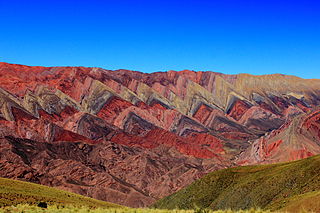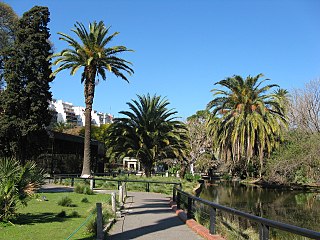
Gerald Malcolm Durrell, was a British naturalist, writer, zookeeper, conservationist, and television presenter. He founded the Durrell Wildlife Conservation Trust and the Jersey Zoo on the Channel Island of Jersey in 1959. He wrote approximately forty books, mainly about his life as an animal collector and enthusiast, the most famous being My Family and Other Animals (1956). Those memoirs of his family's years living in Greece were adapted into two television series and one television film. He was the youngest brother of novelist Lawrence Durrell.

My Family and Other Animals (1956) is an autobiographical book by British naturalist Gerald Durrell. It tells in an exaggerated and sometimes fictionalised way of the years that he lived as a child with his siblings and widowed mother on the Greek island of Corfu between 1935 and 1939. It describes the life of the Durrell family in a humorous manner, and explores the fauna of the island. It is the first and most well-known of Durrell's Corfu trilogy, which also includes Birds, Beasts, and Relatives (1969) and The Garden of the Gods (1978).

The coat of arms of the Argentine Republic or Argentine shield was established in its current form in 1944 but has its origins in the seal of the General Constituent Assembly of 1813. It is supposed that it was chosen quickly because of the existence of a decree signed on February 22 sealed with the symbol. The first mention of it in a public document dates to March 12 of that same year, in which it is stated that the seal had to be used by the executive power, that is, the second triumvirate. On April 13 the National Assembly coined the new silver and gold coins, each with the seal of the assembly on the reverse, and on April 27 the coat of arms became a national emblem. Although the coat of arms is not currently shown on flags, the Buenos Aires-born military leader Manuel Belgrano ordered to paint it over the flag he gave to the city of San Salvador de Jujuy, and during the Argentine War of Independence most flags had the coat of arms.

Argentina has a vast territory and a variety of climates and microclimates ranging from tundra and polar in the south to the tropical climate in the north, through a vast expanse of temperate climate. Natural wonders include the Aconcagua, the highest mountain in the world outside the Himalayas, the widest river and estuary of the planet, the Iguazú Falls, the Humid Pampas, and the Argentine Sea. Visitors enjoy the culture, customs and Argentine cuisine.

Jujuy is a province of Argentina, located in the extreme northwest of the country, at the borders with Chile and Bolivia. The only neighboring Argentine province is Salta to the east and south.

The Motorcycle Diaries is a posthumously published memoir of the Marxist revolutionary Ernesto "Che" Guevara. It traces his early travels, as a 23-year-old medical student, with his friend Alberto Granado, a 29-year-old biochemist. Leaving Buenos Aires, Argentina, in January 1952 on the back of a sputtering single cylinder 1939 Norton 500cc dubbed La Poderosa, they desired to explore the South America they only knew from books. During the formative odyssey Guevara is transformed by witnessing the social injustices of exploited mine workers, persecuted communists, ostracized lepers, and the tattered descendants of a once-great Inca civilization. By journey's end, they had travelled for a "symbolic nine months" by motorcycle, steamship, raft, horse, bus, and hitchhiking, covering more than 8,000 kilometres (5,000 mi) across places such as the Andes, the Atacama Desert, and the Amazon River Basin.
Jacqueline Sonia Durrell is a British author. Born Jacquie Wolfenden, she married naturalist Gerald Durrell and worked alongside him for many years. She assisted him on several of his animal collecting expeditions, and with Jersey Zoo that he founded. The Durrells divorced in 1979.

The Jujuy Exodus was an episode of the Argentine War of Independence. It was a massive forced displacement of people from the Jujuy Province, by orders of General Manuel Belgrano, conducted by his patriot forces that were battling a Royalist army. The population was compelled to leave under the threat of execution.

National Route 9 is a major road in Argentina, which runs from the center-east to the northwest of the country, crossing the provinces of Buenos Aires, Santa Fe, Córdoba, Santiago del Estero, Tucumán, Salta and Jujuy. It starts on Avenida General Paz, which marks the border between the Autonomous City of Buenos Aires and the surrounding province of the same name, and ends at the Horacio Guzmán International Bridge, on the La Quiaca River, traversing 1,967 km (1,222 mi). The road is a limited access motorway from Buenos Aires to Rosario.

The Buenos Aires Eco Park is an 18-hectare (44-acre) park in the Palermo district of Buenos Aires, Argentina. The former zoo, opened in 1888, contained 89 species of mammals, 49 species of reptiles and 175 species of birds, with a total of over 2,500 animals. The institution's goals are to conserve species, produce research and to educate the public. In June 2016 the city formed a bias about the zoo's cruelty. They had to close the 140-year-old zoo and relocate most of the animals to nature reserves, including Temaikèn. The zoo property will be converted into an ecopark.

Eduardo Alfredo Fellner is an Argentine Peronist politician. He was President of the Argentine Chamber of Deputies and governor of Jujuy Province for two terms.

Soto Grimshaw (1833–1900) was an Argentine naturalist, explorer and gaucho.

Martín Malharro (1865–1911) was an Argentine painter who introduced Impressionism in the country in the early 20th century.

Francisco Bernabé Madero was an Argentine lawyer and politician. He served as Vice President of Argentina, and founded the town of Maipú.

José Luis Marcelo Ventecol Mendieta is an Argentine journalist. He was born on a farm in Orán, Salta, but was registered in the Civil Registry in Jujuy.
Francisco Antonio de Cabello y Mesa (1764–1814) was a Spanish soldier and writer. He edited the first newspapers of the current nations of Peru, Argentina and Uruguay and founded El telégrafo Mercantil in Buenos Aires in 1801. He wrote under the pseudonym Jaime Bausate y Meza.

Gregorio Paz was an Argentine soldier who fought in the war of Independence, the war against the Peru–Bolivian Confederation and in the Argentine civil wars.

John Joseph Jolly Kyle FRSA was a pioneering Argentine chemist. Born and educated in Scotland, he emigrated to Argentina in 1862, and on the outbreak of the Paraguayan War served as a pharmacist in the Argentine Army medical corps. He became an Argentine citizen in 1873. At the time Kyle was active specialisation was not an option in Latin American chemistry and it was necessary for a chemist to be a sort of polymath or jack-of-all-trades. Kyle was appointed professor of chemistry at the Colegio Nacional de Buenos Aires in 1871, and chief chemist to the Casa de Moneda de la República Argentina in 1881. He was appointed professor of organic chemistry at the University of Buenos Aires (1889); Chemist to the Inspectorate-General of Sanitary Works (1890); professor of industrial chemistry at the Colegio Nacional (1892); and professor of inorganic chemistry at Buenos Aires University (1896). He was director of the first chemistry doctoral thesis in Argentina (1901).
The following lists events from the year 2014 in Argentina.

Bolivian Argentines are Argentine citizens of Bolivian descent or Bolivia-born people who immigrated to Argentina. In recent decades, Bolivia has become one of the main sources of immigration in Argentina, making Bolivians one of the largest Hispanic American immigrant groups in Argentina, along with Paraguayans, Peruvians and Venezuelans.

















